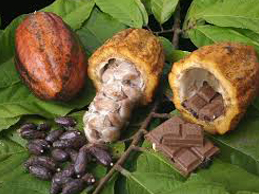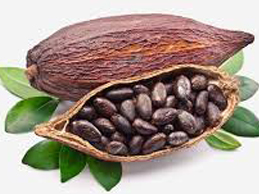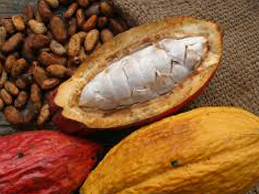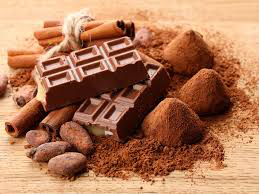Cacao is a product that appeals to the imagination. Our laboratory performs various analyses on cocoa products. From cocoa beans and cocoa powder to end products containing cocoa. We test their composition and the presence of unwanted substances. The results enable the manufacturers to produce their delicious cocoa products from powder to chocolate.
The fermentation process
Cacao (or cacoa) is obtained from the seeds of the cacao tree (Theobroma cocoa), which grows mainly in equatorial areas. Its fruits are picked several times a year. After which the fruits of the cacao tree are cracked open.
The core of the fruit holds some 40 to 50 seeds. Banana leaves cover the beans/seeds. This causes the temperature to rise to approximately 50°Celsius. Bacteria that live at this temperature start the fermentation process, which takes about five days. The germ of the seed dies and the colour of the bean changes from purple to brown. Subsequently, the beans are dried in the sun or in drying houses.
Cacao liquor
The next step is producing the cocoa mass. Fermented, dried beans are successively cleaned, roasted, broken, dehulled, roasted again, and finally ground. Cocoa liquor, a kind of paste, is the end result.
Cacao powder
This liquor is processed into cocoa powder. During this process a large proportion of the fat, the cacao butter, is squeezed out of the liquor. After pressing, a presscake remains that is then ground into cocoa powder.
Analysis of cacao
Our laboratory analyses raw cocoa beans, cocoa powder, cocoa liquor and end products made with cocoa. We test for the presence of fat, free acidity content, pH levels, fineness, moisture, aflatoxin, ochratoxin, among other things. In addition, we perform organoleptic assessment and blue value (BV) determination. We also test cadmium levels in cocoa.
.




